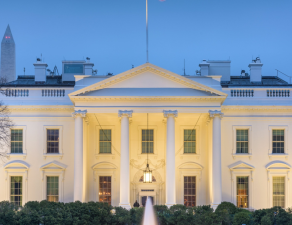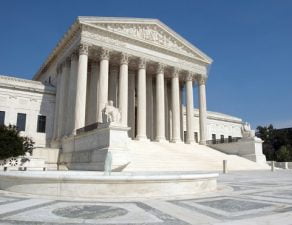The “First Hundred Days” of the Trump Administration are Over – Much Ado in the Arbitration and Financial Worlds
Chairman of the Board – Arbitration Resolution Services
[This analysis by the author was originally published in the Securities Arbitration Commentator blog. Reposted with permission of and thanks to SAC!]
Time certainly does fly. The Trump Administration hit the First Hundred Days milestone on April 30th, which makes now a good time to reflect on activity during this period. The whirlwind of activity has been overwhelming and not all the credit (or blame) can be attributed to the Trump Administration. Below, I start with SCOTUS, then segue to general and specific legislative developments, followed by general and subject-specific regulatory items. Dodd-Frank, the CFPB, and DOL get separate treatment. Fasten your seatbelts!
SCOTUS: The headline grabber of course was the nomination and subsequent Senate confirmation of Neil Gorsuch as Associate Justice of the Supreme Court by a 54-45, mostly party-line vote. This followed a grueling process, complete with the GOP “going nuclear” to gain confirmation. As the Securities Arbitration Commentator blogged previously, Justice Gorsuch appears to be pro-arbitration. Former nominee d.c. Circuit Chief Judge Merrick Garland, who quietly returned to the Court after last November’s Presidential election, was on the panel deciding an arbitration-related case in March, Belize Bank Limited v. Government of Belize, No. 16-7083 (D.C. Cir. Mar. 31, 2017). Oral argument took place February 22nd in Kindred Nursing Centers v. Clark, No. 16-32. To review, the Court granted certiorari last October in these related preemption cases involving an arbitration agreement in a nursing home admission agreement signed by an attorney-in-fact. We can expect a decision on that within the next two months. Last, SCOTUS, which on January 13th granted certiorari in three cases involving whether the Federal Arbitration Act (“FAA”) prevails over the National Labor Relations Act when it comes to enforcing class action waivers in employment arbitration agreements, advised the parties that the case will not be heard until the Fall Term starting next October.
Legislative (general): In addition to the Congressional disapproval resolution discussed below in “Regulatory (general),” the legislative show-stopper was the ten anti-arbitration bills introduced by the Democrats. Some bills are reintroductions, but a few are new. Some amend the FAA, some specific statutes, and some both. To one extent or another, the bills aim to protect consumers – including investors – employees, civil rights claimants, servicemembers, and/or whistleblowers, from perceived unfair processes. Some bills ban predispute arbitration agreements, while some create procedural safeguards. Finally, some are prospective but a few are retroactive. As I opined before, the lone bill I think has a chance of becoming law is the Justice for Servicemembers and Veterans Act (S. 646), not only because it is narrowly focused (it would amend the Uniformed Services Employment and Reemployment Rights Act of 1994, not the FAA), but also because last year’s bill actually garnered Republican support – unlike any of the other anti-arbitration bills introduced in the last Congress. Also of interest was Stronger Enforcement of Civil Penalties Act (SEC Penalties Act) of 2017 (S. 779), a bi-partisan bill that would increase the SEC’s power to fine.
Dodd-Frank: First, the President issued his EO articulating “Core Principles” on financial matters, and directing the Secretary of Finance to review statutes and regulations. Then, House Financial Services Committee Chairman Jeb Hensarling (R-TX) on February 6 circulated a memo to Committee leadership outlining the Financial CHOICE Act that would be introduced to repeal and replace Dodd-Frank. Finally, the Committee published the 593-page proposed law and held hearings on it on April 26th. The Financial CHOICE Act would eliminate the authority granted to both the CFPB and SEC to limit or eliminate predispute arbitration agreements, or set conditions for their use. William F. Galvin, Secretary of the Commonwealth of Massachusetts, immediately sent a four-page letter dated April 25 to Chairman Hensarling opposing the bill, although his letter does not mention arbitration.
Regulatory (general): Plenty of activity here. Hours after taking office on January 20th President Trump ordered a 60-day regulatory freeze, directing federal agencies reporting to the President to essentially cease rulemaking pending review by his administration. Then, the President on February 3rd issued an Executive Order on “Core Principles for Regulating the United States Financial System.” The Order directed the Secretary of the Treasury to consult with the member agencies of the Financial Stability Oversight Council and report back to the president within 120 days and periodically thereafter “on the extent to which existing laws, treaties, regulations, guidance, reporting and recordkeeping requirements, and other Government policies promote the Core Principles and what actions have been taken, and are currently being taken, to promote and support the Core Principles.” The President on March 27 signed H.J. Res. 37, a Congressional disapproval nullifying an Obama-era workplace rule banning companies with federal contracts valued at over $1 million from mandating arbitration of Title VII or sexual harassment or assault claims. As described in detail elsewhere in this Alert, the Senate approved Jay Clayton as SEC Chairman on May 2nd and Alexander Acosta as Secretary of Labor on April 27th. Also, Philip Miscimarra in January was named acting chair of the NLRB, and on April 24th designated by President Trump as actual Chair. Inasmuch as Mr. Miscimarra has since 2013 been a Member of the Board, and has already been confirmed by the Senate, I’m pretty sure he’s doesn’t need to be confirmed again and is thus “in” as Chair.
DOL Fiduciary Rule: SAC reported at least ten times on the ill-fated proposed Department of Labor fiduciary standard rule that was to go into effect in phases starting April 10th. On February 3rd, the President ordered the Secretary of Labor to review the rule and report back to him. This prompted the DOL to file a new rule seeking a delay in the fiduciary rule’s implementation. The Department announced on April 4th that it was delaying implementation for 60 days. Along the way, acting SEC Chair Piwowar blasted the DOL’s rule and suggested that SEC should lead the way on developing a uniform fiduciary rule. And several legal attempts by the financial industry to stay the rule’s original April implementation date failed. Section 841 of the proposed Financial CHOICE Act (ed: starting at page 455) would repeal outright the fiduciary rule. It also would: 1) prohibit the DOL from issuing a new fiduciary rule until 60 days after the SEC promulgates such a rule; and mandate that any new regulation “prescribe a substantially identical definition of what constitutes fiduciary investment advice and impose substantially identical standards of care and conditions” as the SEC’s rule. Almost immediately after he was approved by the Senate as Secretary of Labor, Alexander Acosta got a May 2nd letter signed by 124 Congressional Republicans urging the DOL to extend the delay implementing the fiduciary rule and to eventually kill it. One ray of sunshine for the rule: the $1.07 trillion stop-gap budgetary measure approved April 30th drops any reference to killing the rule. Bottom line: the DOL’s fiduciary rule is theoretically scheduled to be implemented June 9th, but I wouldn’t bet on it.
Consumer Financial Protection Bureau: The CFPB was certainly not ignored during the First Hundred Days. The Republicans introduced three bills to reform the CFPB, taking three different approaches: kill it; restructure it into an independent commission like the SEC, or make it an executive agency with a director terminable at will by the President. Speaking of the last approach, the D.C. Circuit agreed to rehear en banc on May 24 PHH Corporation v. Consumer Financial Protection Bureau, No. 15-1177 (D.C. Cir. Oct. 11, 2016). In the now-vacated decision, a divided D.C. Circuit had held that the CFPB’s structure, which has a single Director with virtually unlimited, unchecked authority, was unconstitutional. The Court had directed that the CFPB be restructured to make the director terminable-at-will by the President. What was the most Kafkaesque development in the PHH case? The United States switched sides and filed an Amicus Brief opposing its own agency. In the meantime, CFPB Director Richard Cordray remains at the Bureau’s helm and, perhaps because of the cloud of uncertainty, the CFPB’s proposed rule banning class action waivers in consumer financial contracts appears to be stalled.
Conclusion
If the past is prologue, the future will bring further developments. Perhaps I’ll return to this topic at the 200 days milestone.






